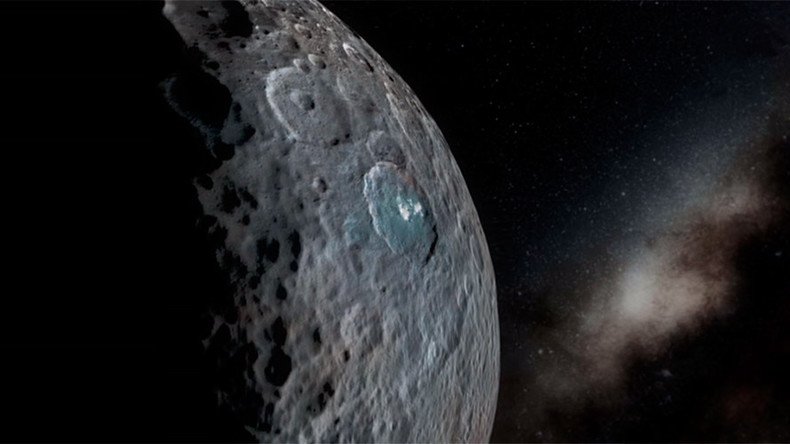Close encounters: NASA simulates space flight over ‘dwarf planet’ Ceres (VIDEO)

A team of NASA experts has released a video showing what it would look like to fly over Ceres, the largest asteroid in the solar system, more than 200 years after it was first spotted.
In a drifting space montage of epic proportions, the mock flight takes armchair astronauts on a tour of Ceres’ surface, detailing dark moonscapes and craters such as Occator and Ahuna Mons.
Due to its orbital pattern, one day on Ceres is equivalent to nine Earth hours.
Ceres is the largest object in the asteroid belt, with a 587 miles (975 kilometers) diameter. It was first discovered by Italian astronomer Giuseppe Piazzi, during his observation of the stars back in 1801.
It was once thought to be ‘the missing planet’, occupying a gap German mathematician Johannes Kepler identified between Mars and Jupiter. However, it was later found to be part of the main asteroid belt. Rather confusingly, the mass of rock and ice has dual status as both an asteroid and a ‘dwarf planet’.
The simulated flight footage was made using color-enhanced photographs taken by the space agency’s Dawn spacecraft.
“The simulated overflight shows the wide range of crater shapes that we have encountered on Ceres. The viewer can observe the sheer walls of the crater Occator, and also Danut and Yalode, where the craters are a lot flatter,” NASA scientist Ralf Jaumann said in a statement.
It took more than seven years and 4.9 billion kilometers for NASA’s craft to reach the alien world.
The Dawn ship has been taking photographs of the Ceres surface since it arrived in March last year. It is the only vessel to reach two NASA “extraterrestrial targets” – the first being frozen lava asteroid, Vesta.
In December, it reached its lowest ever altitude over the dwarf planet, and began mapping the mysterious last frontier.
“When we set sail for Ceres upon completing our Vesta exploration, we expected to be surprised by what we found on our next stop,” Chris Russell, principal investigator for the mission, said at the time.
READ MORE: ISS astronauts share epic images of Earth (PHOTOS)
“Everywhere we look in these new low-altitude observations, we see amazing landforms that speak to the unique character of this most amazing world.”












